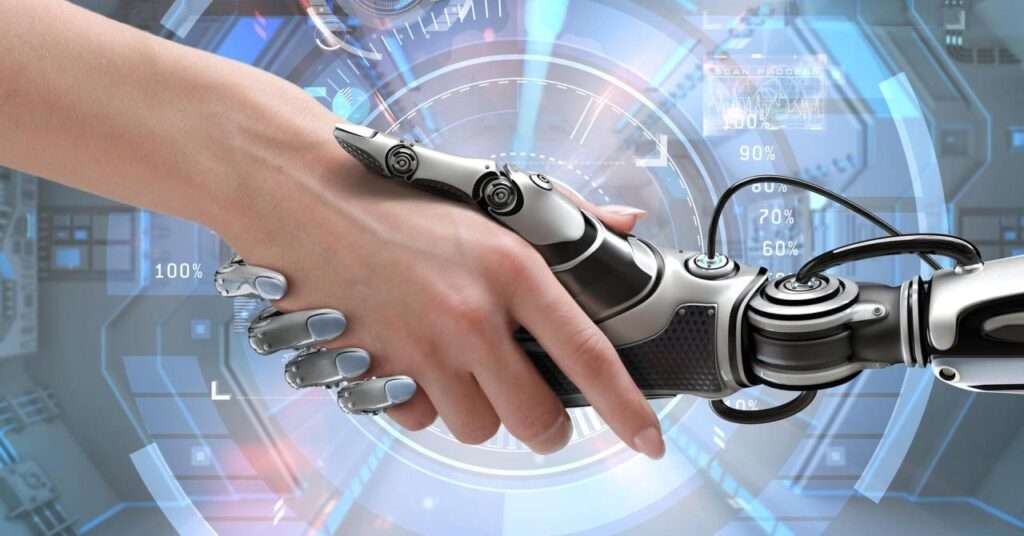Complex customer interactions can lead to frustration – for both businesses and their customers. Contact Center solutions which is full fledged with the power of AI is all about making these interactions easy. It simplifies the way a business connects and communicates with your audience. However, amid this technological advancement, the human touch remains a vital element in ensuring exceptional customer experiences. In the age of AI, maintaining a human touch in customer service is essential. While AI technologies streamline processes and provide quick solutions, human intervention adds empathy and emotional connection.
Businesses are realizing that combining the efficiency of AI-powered automation with the empathy and problem-solving skills of human agents creates a synergy that results in exceptional customer service. Striking this balance ensures that customers receive the best of both worlds. In this article, we are looking into the delicate balance between human interaction and AI in customer service, exploring the concept of Customer Service Automation and its relationship with cloud based Contact Center as a Service (CCaaS).
What is Customer Service Automation?
Customer Service Automation refers to the use of technology, primarily AI and chatbots, to streamline and enhance customer service processes. It encompasses automated responses to frequently asked questions, routing inquiries to the right department, and even chatbots capable of engaging in natural conversations with customers.

Source: https://www.sprinklr.com/cxm/customer-service-automation/
In the digital age, CSA has become increasingly prevalent due to its ability to provide instant responses, operate 24/7, and reduce operational costs. However, the challenge lies in ensuring that while embracing automation, the human touch isn’t sacrificed.
The Role of AI in Customer Service
AI has become the backbone of modern customer service operations. It can handle routine tasks like answering frequently asked questions, processing transactions, and even resolving common issues. This not only saves time but also allows businesses to allocate human resources to more complex and emotionally demanding tasks.
For instance, AI-powered chatbots can efficiently handle straightforward inquiries, leaving human agents free to focus on resolving complicated issues or providing personalized assistance, where the human touch is most valued.
CCaaS, combined with AI, can provide invaluable insights into customer behavior and preferences. By analyzing data gathered from various interactions, businesses can tailor their services and marketing strategies to better meet customer expectations.
Furthermore, AI-driven analytics can identify trends and patterns in customer inquiries, allowing companies to proactively address common issues, thus improving overall customer satisfaction.
The Human Touch: Still Irreplaceable
Empathy and Emotional Intelligence; Despite the increasing role of AI, the human touch remains indispensable in customer service, particularly when it comes to understanding and addressing customer’s emotions and complex concerns. Human agents bring empathy and emotional intelligence into the equation, which can’t be replicated by machines.
A human agent can sense frustration or confusion in a customer’s voice, adapting their responses accordingly. They can also engage in empathetic conversations, building sympathy and trust, which are essential for customer loyalty.
AI and Human Collaboration
The key to successful customer service in the digital age lies in achieving synergy between AI and human agents. This is where CCaaS (Contact Center as a Service) enters the picture. CCaaS is a cloud-based platform that provides a centralized hub for managing customer interactions across various channels.
CCaaS facilitates the collaboration between AI and human agents by offering a unified interface where both can work seamlessly. Here’s how this collaboration can be orchestrated effectively:
Intelligent Routing
Efficient Inquiry Routing; With CCaaS, incoming inquiries can be intelligently routed to either AI or human agents based on predefined criteria. Routine inquiries can be directed to AI-powered chatbots, ensuring quick and accurate responses, while complex issues are forwarded to human agents equipped with the necessary skills.
AI Assistance
Human-AI Cooperation
Human agents can leverage AI as a valuable tool. AI can provide real-time information and suggestions to assist agents during customer interactions. For example, it can offer relevant product information, troubleshooting guides, or upsell recommendations, empowering human agents to provide more informed assistance.
The Human Touch in Personalization
While AI can offer personalized product recommendations based on past purchases and browsing history, it’s the human touch that truly excels in understanding the unique needs and preferences of each customer. Human agents can engage in meaningful conversations, actively listening to customer’s desires and concerns, and tailoring their recommendations accordingly.
Maintaining the Balance between AI and Human Touch
Maintaining the balance between AI and the human touch is an ongoing process that requires continuous monitoring and adjustment. Businesses should regularly review their automated processes and ensure that AI systems are updated to handle new inquiries effectively.
Additionally, employee training is crucial. Human agents must be equipped with the skills to collaborate seamlessly with AI, leveraging its capabilities while providing the empathy and emotional intelligence that customers seek.
Conclusion
The art of balancing the human touch and AI in customer service is pivotal for businesses aiming to bloom in the digital age. Customer Service Automation has become much easier with Contact Center as a Service (CCaaS) have revolutionized how companies interact with customers, offering efficiency and convenience.
However, it’s essential not to lose sight of the human element. Empathy, emotional intelligence, and the ability to connect on a personal level remain crucial aspects of customer service. Therefore, businesses must embrace technology while cherishing the unique qualities that only humans can bring to customer interactions.
The future of customer service lies in achieving harmony between the capabilities of AI and the emotional intelligence of human agents. By doing so, businesses can provide exceptional customer experiences that drive loyalty and growth in an ever-evolving digital landscape.






